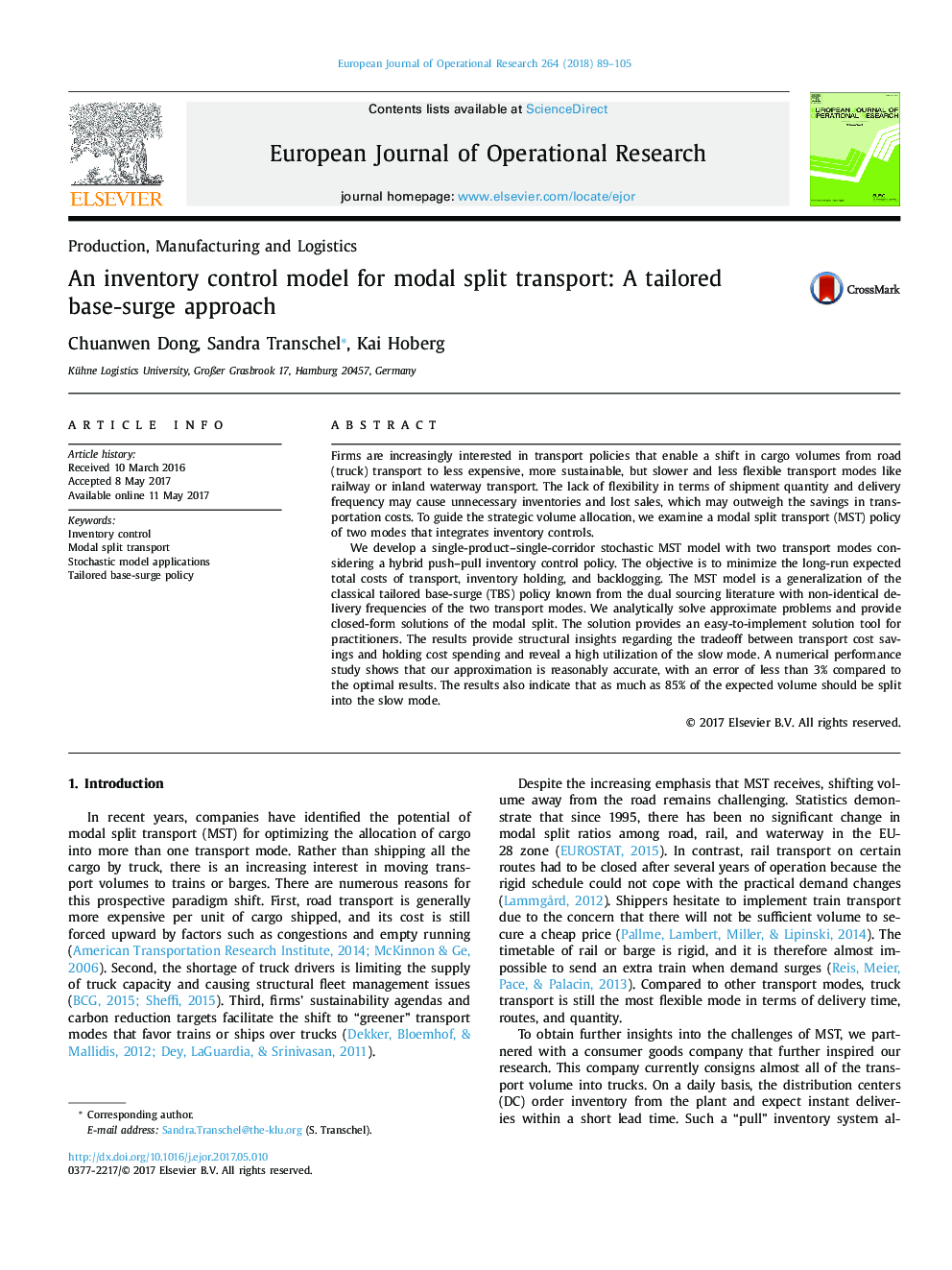| کد مقاله | کد نشریه | سال انتشار | مقاله انگلیسی | نسخه تمام متن |
|---|---|---|---|---|
| 4959444 | 1445945 | 2018 | 17 صفحه PDF | دانلود رایگان |
- We analyze a joint modal split transport and inventory control problem.
- We develop an approximated analytical solution and derive structural properties.
- We show that our approximated solution provides an error of less than 3%.
- Our results reveal a surprisingly high volume split in the slow mode.
- We provide a simple and easy-to-implement tool for practitioners.
Firms are increasingly interested in transport policies that enable a shift in cargo volumes from road (truck) transport to less expensive, more sustainable, but slower and less flexible transport modes like railway or inland waterway transport. The lack of flexibility in terms of shipment quantity and delivery frequency may cause unnecessary inventories and lost sales, which may outweigh the savings in transportation costs. To guide the strategic volume allocation, we examine a modal split transport (MST) policy of two modes that integrates inventory controls.We develop a single-product-single-corridor stochastic MST model with two transport modes considering a hybrid push-pull inventory control policy. The objective is to minimize the long-run expected total costs of transport, inventory holding, and backlogging. The MST model is a generalization of the classical tailored base-surge (TBS) policy known from the dual sourcing literature with non-identical delivery frequencies of the two transport modes. We analytically solve approximate problems and provide closed-form solutions of the modal split. The solution provides an easy-to-implement solution tool for practitioners. The results provide structural insights regarding the tradeoff between transport cost savings and holding cost spending and reveal a high utilization of the slow mode. A numerical performance study shows that our approximation is reasonably accurate, with an error of less than 3% compared to the optimal results. The results also indicate that as much as 85% of the expected volume should be split into the slow mode.
Journal: European Journal of Operational Research - Volume 264, Issue 1, 1 January 2018, Pages 89-105
